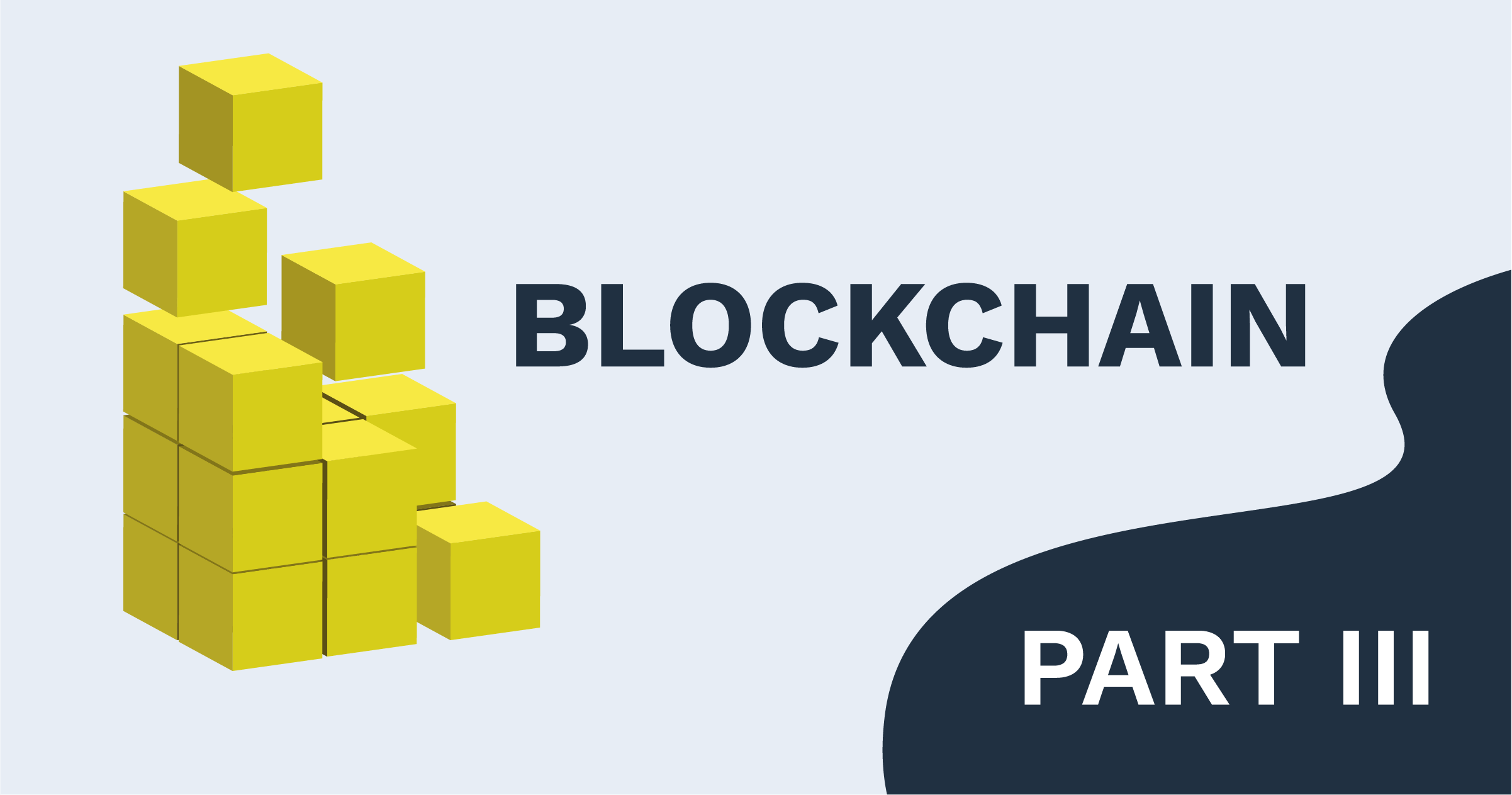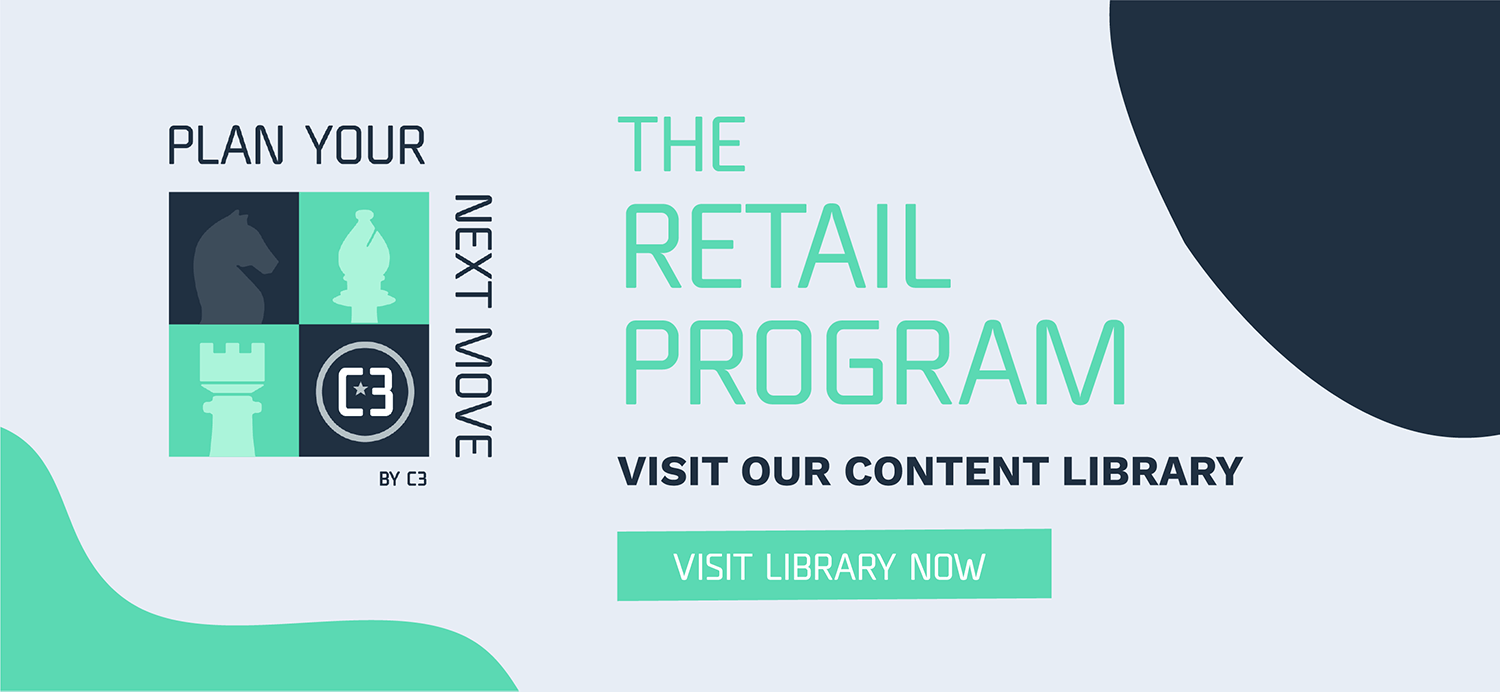Emerging Technologies in Retail: Back to Blockchain

Are you looking to get ahead with emerging technologies? Part three of this three-part blog series explores what we should be considering about Blockchain.
We chose three technologies to discuss: 5G communications, digital twins and blockchain. All three are rapidly evolving, and all three have demonstrable benefits for supply chain operations.
Blockchain is also known as distributed ledger technology. It is a system whereby every transaction, every move of an item in the supply chain is tracked via a digital ledger. All the parties can see every entry in the ledger and changes cannot be made without signoff from all involved. Ownership of the data is decentralized; it is available to all, but the chain of custody is crystal clear.
Originally conceived as a means to secure crypto-currency transactions (Bitcoin and the like), in the past couple years it gained a lot of traction in the leafy greens supply chain as a means to combat food-borne illnesses like salmonella by being able to ensure the provenance of food items is known. Walmart led the charge to implement blockchain, requiring greens suppliers to sign onto an IBM-designed platform.
This initiative is not alone: TradeLens, Global Shipping Business Network (GSBN), Blockchain in Transportation Alliance (BiTA), Digital Container Shipping Association (DCSA) and other associations are testing the waters for blockchain in the shipping industry. In agriculture, the world’s four largest companies have banded together in a project to digitize the grain trade.1
Block Party
Blockchain promises great strides in overcoming supply chain inefficiencies. IBM estimates that global trade could see a 15 percent boost if blockchain were widely implemented.2
Because it is fully transparent it should be able to show where items come from. For example, tracking provenance was key in the adoption of blockchain in the leafy greens initiative. It should show what's next in the trip, thereby making hand-offs and border crossings simpler and faster, and it can provide real-time tracking. Eliminating paperwork is one of blockchain's chief promises3, an objective that many in supply chain have been working towards for years.
For retail, it's suggested that aside from the track and trace benefits outlined above, it also has potential on the customer-facing side to improve trust and authenticity for brands and products.4 Blockchain-authenticated goods, like fair-trade foods, or child-labour-free clothing, allow retailers to prove that they are on the side of good corporate citizenship, rather than just making the claim. Likewise, blockchain offers retailers and brand owners the ability to reduce the penetration of counterfeit parts and final products into the retail chain.5

Putting the Block on Blockchain
However, recent surveys suggest that while blockchain on executives' radar, it's not at the top of their must-implement lists. In one study only five percent ranked the technology as a game changer,6 while in another, it ranked lowest among 11 emerging technologies in use today and only eighth in supply chain execs' estimation of what technologies would be adopted in five years.7
The problem seems to be that the return on investment for blockchain initiatives is opaque. While companies considering a blockchain project cite cost savings, traceability and transparency as the top benefits, 92 percent of organizations that were already involved in implementation said that their inability to measure ROI was the main challenge.8
Blockchain faces two main hurdles. First is a lack of awareness and second is the problem of sharing proprietary and competitive data with supply chain partners.
In a recent call for blockchain research to support initiatives in the U.S. food and beverage industry, Information Services Group (ISG) director Alex Manders identified the problem:
"Based on my observations, the top challenges facing the food and beverage industry are incomplete awareness and understanding of blockchain technology vendors, solutions and business-to-business collaboration models; a lack of established industry and governance frameworks, and markets influenced by supply chain participants with a disproportionate pool of resources."9
Indeed, the question of collaboration among supply chain partners is the most frequently cited barrier to blockchain adoption. For blockchain to become a truly useful tool, it requires the cooperation of every party in the chain. And that's a big hurdle for many companies.
Not only would they have to modify their digital systems to join a common platform, they also have to figure out how to scrub the data that is shared so that company secrets are not revealed, and at the same time ensure that data meets the needs of the ledger's recordkeeping. Lots of work is being done at the intergovernmental level right now to educate corporate players about the benefits of blockchain10, but the fact that its success will depend on the intervention of governments, global trade organizations and the like, is a sign that the technology's widespread adoption may be years away.
The End Game
One thing is clear in the world of emerging technologies and the retail supply chain. There is no single miracle move that will save the game. 5G is coming, but when? Digital twins offer the possibility of real gains, but come at a cost of tremendous complexity. Blockchain can tell us everything about where an item comes from, but do we want to trade our own data to get that information?
What we do know is the pressures that are making us examine these new technologies are not changing. The retail supply chain is getting faster every day, and competition is intensifying. In this environment, how do you choose the right solution to meet the challenge?
Let's take it right back to the distribution centre. All the solutions we've described in this paper are very high-level. They have far-reaching objectives that, if they work, have the potential to impact the entire supply chain.
But there’s one place where you can gain an advantage, given that you choose the right technology: and that’s at your dock doors. Trucks come, trucks go. They will do that whether your DC is running on 5G or not. They will do it if you are blockchain enabled and they'll still arrive and depart if someone is monitoring them as a digital twin.
The dock door, as simple as it is, can be a great source of efficiency. Take a look at your scheduling system. Could it be improved? Chances are the answer is yes. That's where C3 comes in. Using our cloud-based dock scheduling could give your retail DC the boost you are looking for in new technology, without the cost, implementation headaches and months of research. [Click here to see a video]
Simply allowing drivers to make an appointment allows you to allocate labour and equipment, ensure there is no wait time, and eliminate repetitive, and error-prone manual processes. Even more, imagine if your appointment process could be automated by configuring your business rules into our system and allowing carriers / suppliers to take care of the booking via an online portal. With this one effective, simple addition to your technology repertoire you can increase efficiency in the DC, keep up with retail orders and look like a hero.
So, instead of staying up at night trying to figure out how blockchain will help you, or when 5G will be available, why not investigate, right now, the strategic advantage of scheduling?
REFERENCES:
[1] "Blockchain and the fourth industrial revolution", Nadia Hewitt, Tradelens blog, September 23, 2019.
[2] "Streamline business transactions and create revenue opportunities with IBM Blockchain", IBM, 2018.
[3] Cresting the hill: CSCMP's Annual State of Logistics Report, AT Kearney, 2019.
[4] "IBM blockchain in retail", IBM Blockchain, no date.
[5] Does blockchain hold the key to a new age of supply chain transparency and trust?, Capgemini Research Institute, October 2018.
[6] "The reality of blockchain", Heather Pemberton Levy, Smarter with Gartner, October 22, 2019.
[7] 2019 MHI Annual industry Report – Elevating supply chain digital consciousness, MHI, April 10, 2019.
[8] "Capgemini: supply chain blockchains lack clear ROI", Ledger Insights, October 2018.
[9] "ISG executive calls for federal blockchain research, funding to improve food safety", ISG media release, October 21, 2019.
[10] "Blockchain and the fourth industrial revolution", Nadia Hewitt, Tradelens blog, September 23, 2019.

